Bongo animal is one of the most interesting creatures found on the African continent. It is the largest type of forest antelope possessing a striking appearance. The animal is covered with a chestnut colored coat. What makes it stand out is the pattern of white stripes on the coat. In addition, both the genders possess spiraled horns.
Read on to discover more fascinating information and facts about the bongo animal.
Physical Characteristics
Bongo antelope is a mammal. On average, the body length of a fully grown bongo varies between 5.5 and 8.25 feet. The animal also possesses a tail which could be as long as 18 to 26 inches. Their long horns can grow up to 37 inches. Running around the reddish-brown coat are vertical stripes which are ten to fifteen in number. White bands, which are broader than the body stripes, appear on the legs. On the other hand, small spots can be found on the cheeks of the animal.
Habitat
The Bongo animal occupies parts of the eastern, western as well as central Africa. However, its population has been dwindling leading to the animal becoming rare today. It has become completely extinct from some countries of the continent. Some populations are still found in dense lowland forests as well as among bamboo plantations in western Africa. The populations found in this region are referred to as Lowland Bongo. On the other hand, the animal’s historical habitat also comprised of regions of Kenya and Uganda. Here, the antelope – found in highland forests – is known as Mountain Bongo. However, it has almost completely disappeared from Uganda and is now found only in a few regions of Kenya.
Diet
The Bongo antelope is a herbivore. Therefore, it feeds solely on plant matter. It is referred to as a grazer as well as browser. As a grazer, the animal devours various types of grasses as well as other types of vegetation growing at the ground level. On the other hand, as a browser, the antelope feeds on plant matter growing at a higher level. These include leaves, shoots and fruits. Usually, herbivores exhibit only one of the two behaviors. However, in the case of bongos, they adopt either of the two manners depending on the availability of food.
Predators
Although the bongo itself is a herbivorous organism, it attracts fierce carnivores which are its natural predators. These include lions, leopards and hyena. Even large pythons engulf and feed on the antelope.
Other than these natural predators, the animal has another significant enemy – human beings. They are hunted for their valuable horns, coats as well as meat. Communities living near their natural habitat pose the biggest challenge to them. Dogs are used to hunt the animal down. Despite its natural camouflage, the animal is caught and killed. Owing to this reason, populations of this fascinating antelope have dwindled very fastly.
Interesting Bongo Animal Facts
Here are some interesting bongo animal facts.
- The scientific name of the animal is Tragelaphus eurycerus.
- The white stripes on the animal’s coat help it in camouflaging itself in order to hide from its natural predators.
- Unlike most other animals, adult male and female bongos grow up to almost the same size.
- The male spends a solitary life. On the other hand, the females are found among herds of up to fifty members.
- The color of the animal’s auburn coat comes off upon rubbing. Rain water which washes down the antelope’s body is usually reddish owing to the coat pigments.
- The top running speed of the antelope reaches to 70 kilometers per hours.
- Like humans, bongos have a gestation period of nine months. Their young ones are weaned at six months.
- Their spiraled horns are not only long, but also heavy.
- According to a superstition believed by the native folks, touching a bongo or eating its meat leads to epileptic seizures. It is for this reason that the animal remained unharmed in its native habitat for a long time.
- It has been reported that bongo consumes wood which is burnt by lightning storms. This is done to obtain minerals.
- The animal possesses a prehensile tongue. This means that the tongue is adapted to grasp objects. It is, therefore, used to grasp leaves, grasses and other vegetation during the process of feeding.
- Bongos can live for as long as nineteen years. However, this lifespan has only been observed for animals living in captivity. In the wild, they have a shorter lifespan owing to the large number of predators.
Sadly, the populations of this interesting creature have dwindled rapidly over the past few decades. Therefore, steps are being taken for the conservation of the remaining members of its clan. Different organizations have undertaken projects for this purpose. These include the African Wildlife Foundation and the Zoo Atlanta.
Latest Mammals
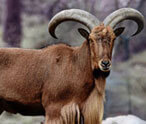
Types Of Goats
Goat is a mammal that belongs... read more
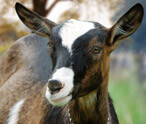
Goat Facts
A domesticated form the wild goat of...read more
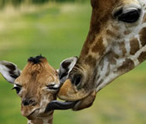
Giraffes Facts
Giraffes are creatures with extremely...read more
Latest Birds
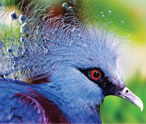
Victoria Crowned Pigeon
With its name...read more
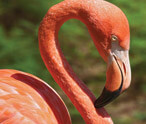
Information About Flamingos
Flamingos are...read more
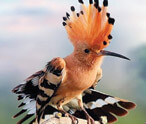
Hoopoe Bird
Famous for its distinctive crown of...read more
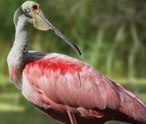
Roseate Spoonbill
The beautiful Roseate Spoonbill...read more





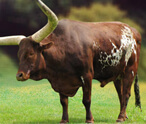

















Largest Birds of Prey in the World by Size and Weight
Also called raptors, the birds...
List of Birds That Fly in V Formation
Did you ever feast your eyes on the amazing phenomenon...
Birds of Prey List
A bird of prey is also known as a raptor or a hunter. It belongs to the group of...
Millipedes Vs Centipedes
Centipedes and millipedes are both arthropods from the group...
Difference Between Warm Blooded and Cold Blooded Animals
Every living organism...
Top 10 Extremely Dangerous Insects
The insects have been grouped in class 'insecta' of...
Sheep Vs Goat
The goat and the sheep are related to each other through the same family. They...
Animals with Blue-colored Blood
Humans and other vertebrates have red-colored blood running...
Birds, Mammals And Reptiles
Before coming to the question of common ancestry of birds...